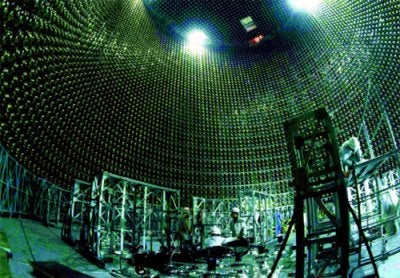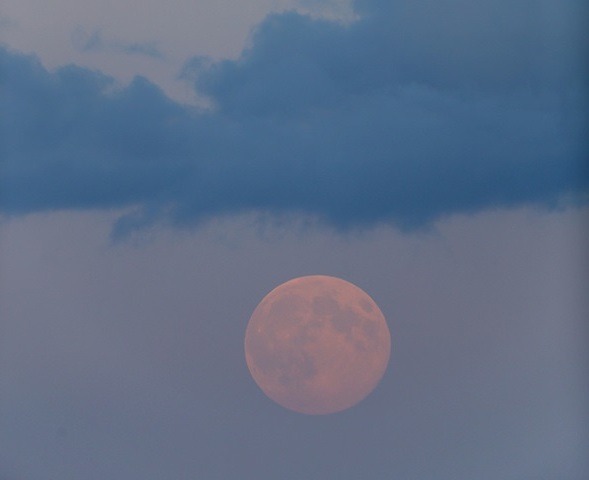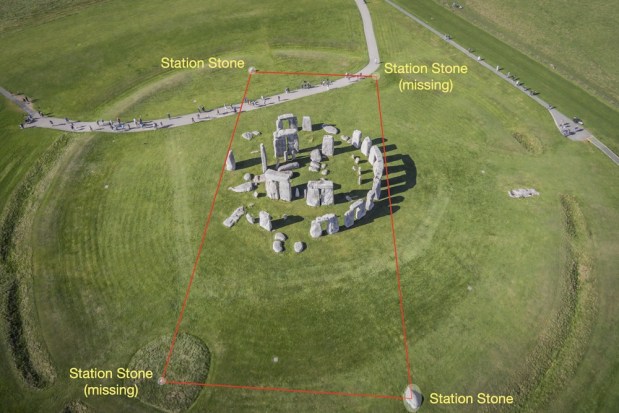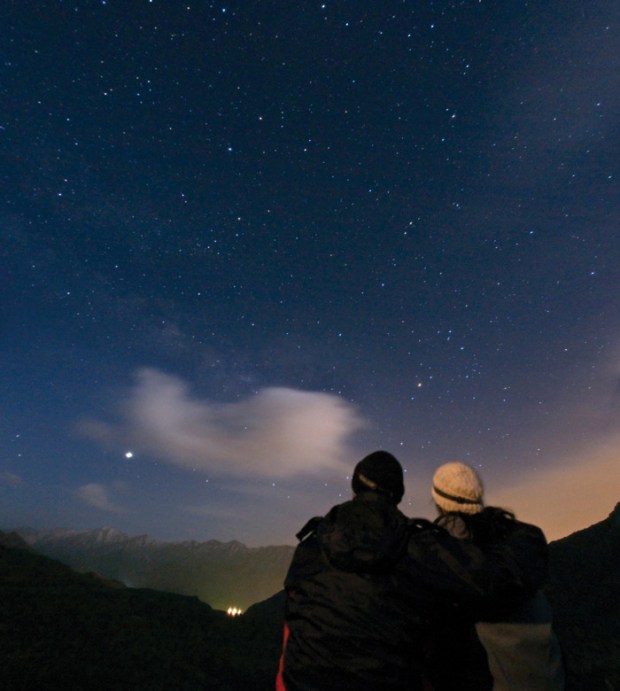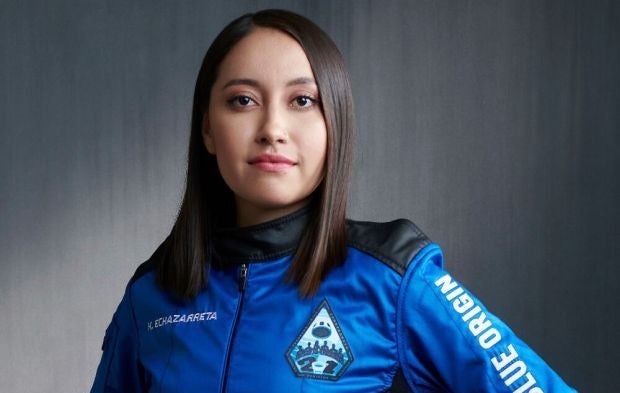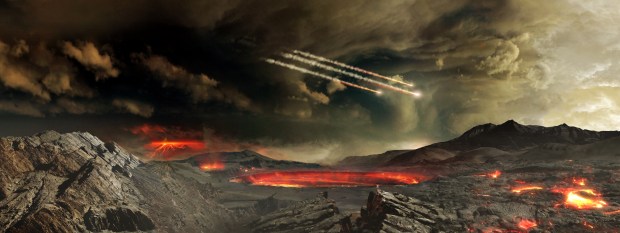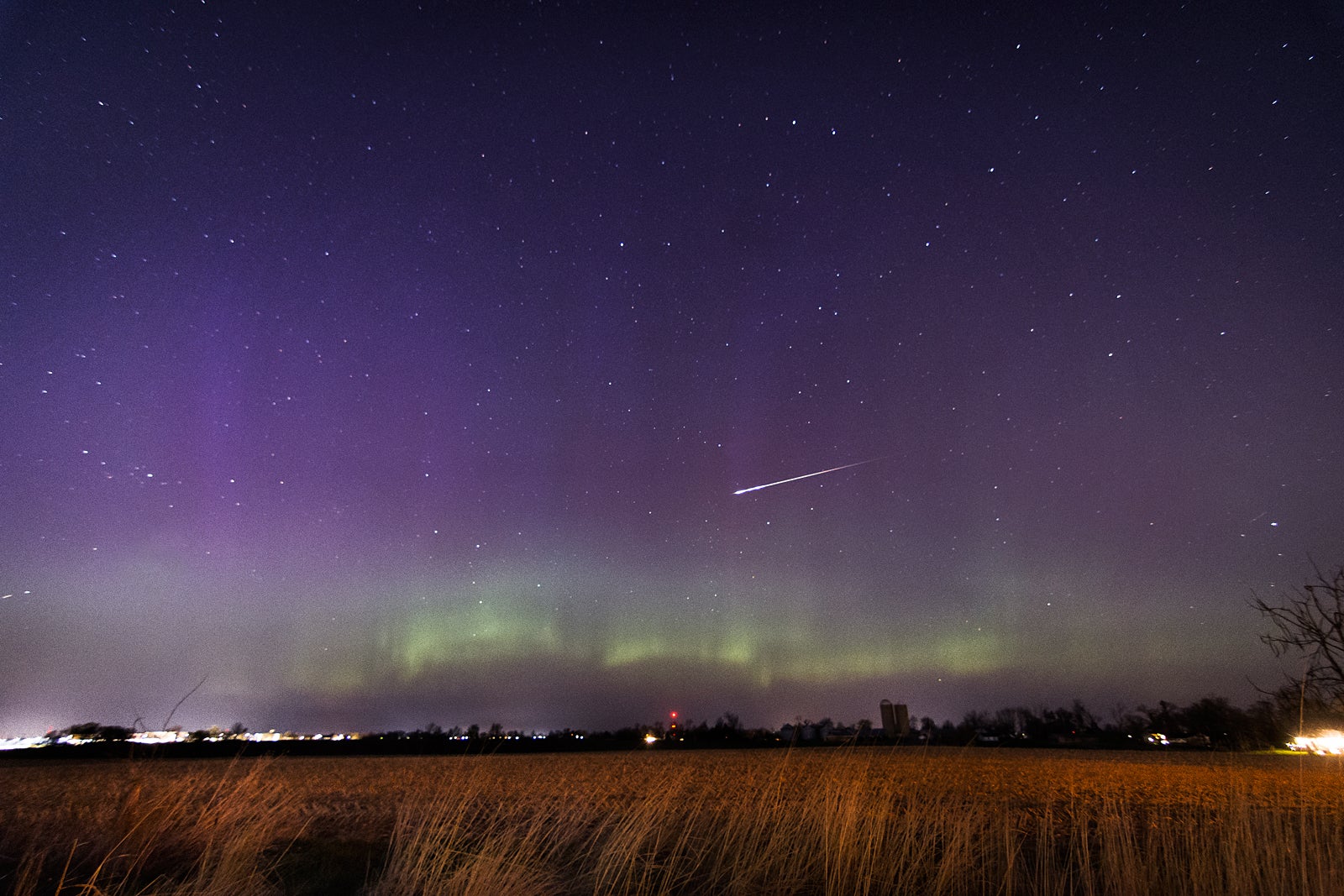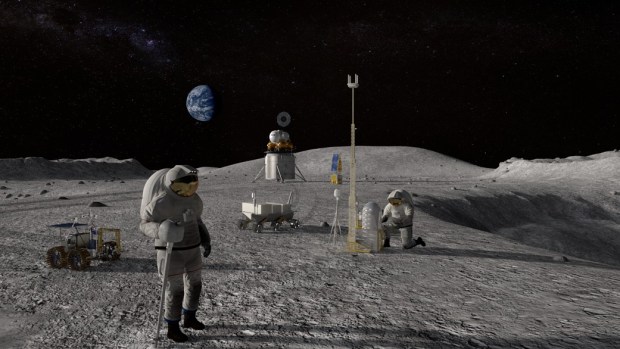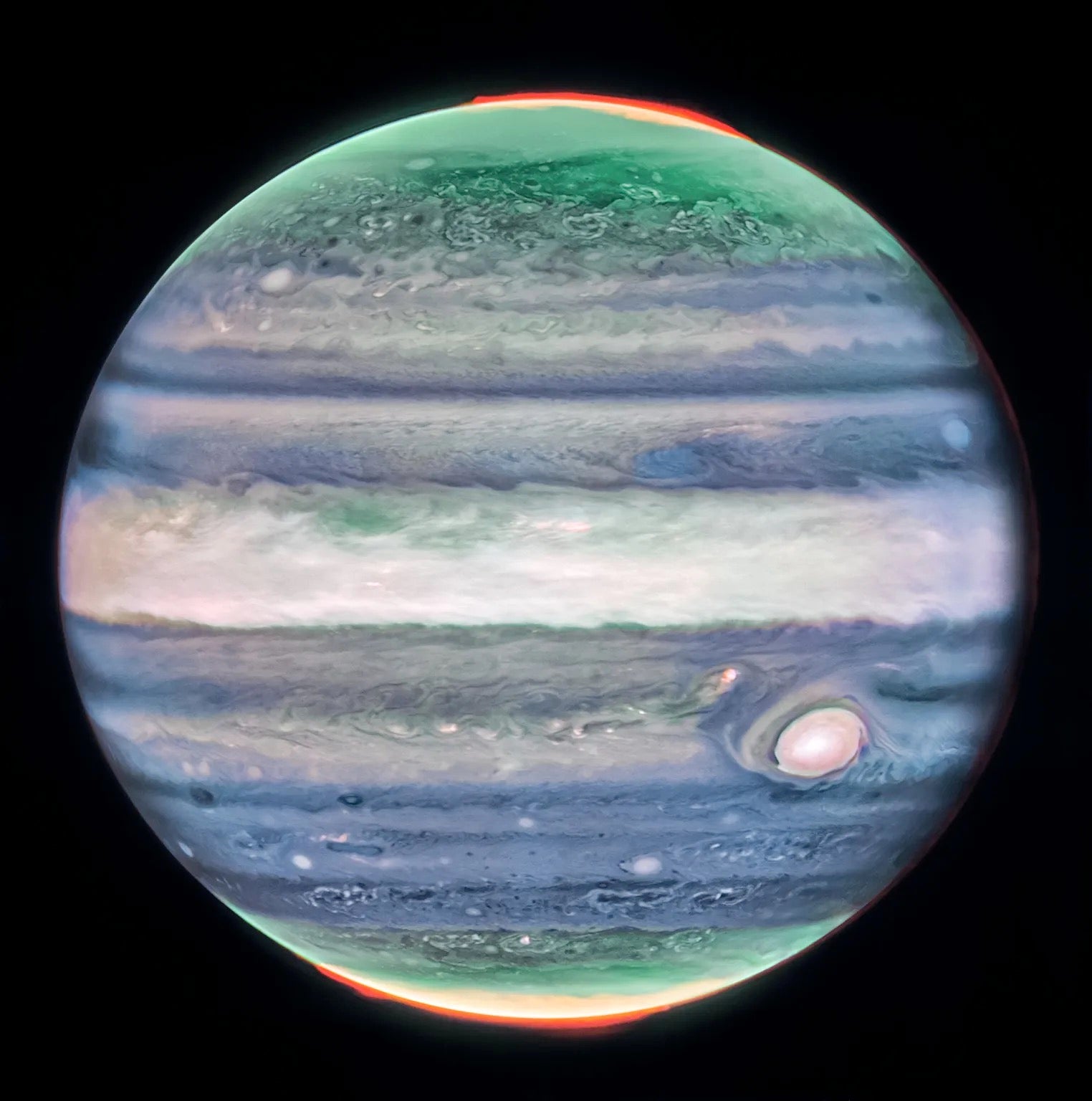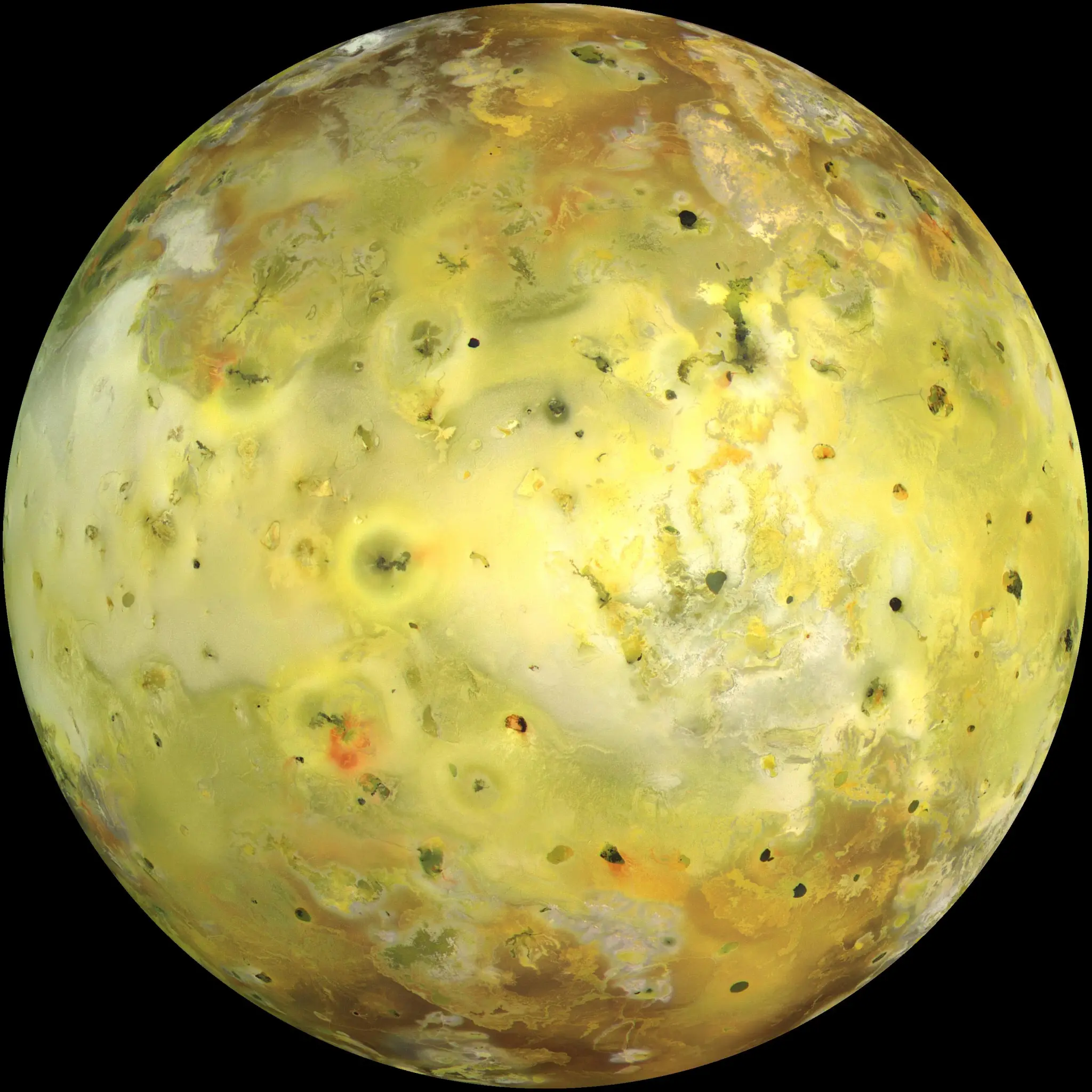Only two cosmic sources of neutrinos have been pinned down so far: the interior of the Sun, where nuclear fusion reactions produce prodigious quantities of neutrinos; and Supernova 1987A, in which the neutrinos formed during the collapse of a massive star’s core (approximately 99 percent of a supernova’s energy is released as neutrinos).
Neutrino detectors work by looking for the carnage left behind when a neutrino does interact with normal matter. In some cases, the neutrino transmutes an atomic nucleus into a different element and the detector watches for that change. More often, the neutrino interacts with matter and produces a high-energy subatomic particle. That particle will produce an eerie bluish light called Cerenkov radiation when it moves faster than the speed of a light in a transparent medium such as water. The speed of light in a vacuum — 186,000 miles (300,000 km) per second — is the highest speed attainable, but water slows it down to a relatively lethargic 140,000 miles (225,000 km) per second.
Since the 1960s, physicists have developed experiments that can detect neutrinos from astrophysical sources. Astronomy.com has complied a list of the larger neutrino “telescopes” that have come on-line or will in the near future.
Homestake
Operations: 1968-2001
Location: Lead, South Dakota
The granddaddy of all neutrino experiments, Homestake used a tank containing 100,000 gallons of perchloroethylene (essentially dry-cleaning fluid) located 4,850 feet underground in the Homestake Gold Mine. Neutrinos from the Sun interacted with a few chlorine atoms, converting them to argon. The experiment found fewer solar neutrinos than expected. Physicists later deduced that this discrepancy arose from neutrinos changing “flavor” and having a small mass. Raymond Davis, Jr., of Brookhaven National Laboratory, won the 2002 Nobel Prize in Physics for his leadership in this experiment.
SAGE (Soviet American Gallium Experiment)
Operations: 1990-present
Location: Baksan Laboratory, Russia
Now known officially as the Russian American Gallium Experiment, SAGE uses a tank containing 55 tons of liquid gallium metal located 5,250 feet below the Caucasus Mountains to search for solar neutrinos. The detector finds the neutrinos by watching for interactions that convert gallium atoms into germanium atoms.
GALLEX (GALLium EXperiment)
Operations: 1990-present
Location: Gran Sasso Laboratory, Italy
GALLEX uses the same technique as SAGE to search for solar neutrinos (watching for neutrinos to interact with gallium and convert it to germanium). It GALLEX’s case, the target consists of a tank containing 30.3 tons of gallium in a liquid gallium chloride solution located 3,700 feet underground in Italy’s Abruzzo region.
Kamiokande (KAMIOKA Nucleon Decay Experiment)
Operated: 1983-1996
Location: Kamioka, Japan
Kamiokande’s detector consisted of 4,500 tons of pure water in a tank located 3,300 feet beneath the Japanese Alps. Photomultiplier tubes then searched for Cerenkov radiation from neutrino interactions in the tank. It was originally developed to search for the decay of protons, as predicted by early Grand Unified Theories, but was later upgraded to allow it to search for neutrinos. It was one of two experiments that detected neutrinos from Supernova 1987A in the Large Magellanic Cloud. Team leader Masatoshi Koshiba shared the 2002 Nobel Prize in Physics with Raymond Davis, Jr.
Operations: 1996-present
Location: Kamioka, Japan
As its name implies, Super-Kamiokande dwarfs the size of its predecessor. The tank holds 50 tons of pure water and contains more than ten times as many photomultiplier tubes as Kamiokande did. Super-Kamiokande’s size allowed it to expand on the results of earlier experiments, confirming that not as many solar neutrinos are reaching Earth as expected.
IMB (Irvine-Michigan-Brookhaven)
Operations: 1982-1991
Location: near Cleveland, Ohio
Located in a Morton salt mine 2,000 feet under Lake Erie, the IMB Experiment consisted of a tank filled with 8,000 tons of water. As with Kamiokande, its purpose was to find evidence that protons decayed as early Grand Unified Theories predicted. (By the way, proton decay has yet to be found. However, the theories have been modified and now it appears the proton has a much longer life span than thought.) IMB’s signature moment came on February 23, 1987, when it detected a handful of neutrinos from Supernova 1987A. The other neutrinos IMB found came from cosmic ray interactions with Earth’s upper atmosphere.
Sudbury Neutrino Observatory (SNO)
Operations: 1998-present
Location: Sudbury, Ontario, Canada
SNO detects neutrinos in 1,100 tons of pure heavy water. (Heavy water contains deuterium [hydrogen with one proton and one neutron in its nucleus] in place of normal hydrogen.) SNO’s most significant contribution came about because it was sensitive to multiple solar nuclear reactions, one that produces only electron neutrinos and another that produces neutrinos of all flavors. The observations showed that neutrinos do change flavor, resolving the so-called “solar neutrino problem.”
AMANDA (Antarctic Muon And Neutrino Detector Array)
Operations: 1997-present
Location: South Pole
Instead of using the liquid variety, AMANDA researchers decided to use frozen water as their neutrino detector. They drilled 19 holes deep into the ice sheet that covers Antarctica at the South Pole. The photomultiplier tubes lie 1 to 1.5 miles beneath the surface, a depth at which the polar ice is transparent and Cerenkov flashes from neutrino interactions can be seen.
ANTARES (Astronomy with a Neutrino Telescope and Abyss Environmental RESearch)
Expected Operation: 2006
Location: Mediterranean Sea
Located about 1.5 miles under the Mediterranean Sea off the coast of France, ANTARES will search for high-energy neutrinos expected to emanate from supernovae, gamma-ray bursts, active galactic nuclei, and the annihilation of Weakly Interacting Massive Particles.
NESTOR (Neutrino Extended Submarine Telescope and Oceanographic Research)
Expected Operation: TBA
Location: Mediterranean Sea
Located about 2.5 miles (4 km) under the Mediterranean Sea off the coast of Greece, NESTOR will search for the same kinds of high-energy neutrinos being targeted by ANTARES, and so it should be sensitive to the same kinds of celestial sources.
IceCube
Expected Operation: TBA
Location: South Pole
Based on the same principle as AMANDA, IceCube simply expands the size of the ice under scrutiny. This future array will be a cube measuring 1 km on a side (compared with AMANDA’s cylindrical arrangement some 200 feet in diameter). IceCube will be joining ANTARES and NESTOR in the search for high-energy neutrinos.

